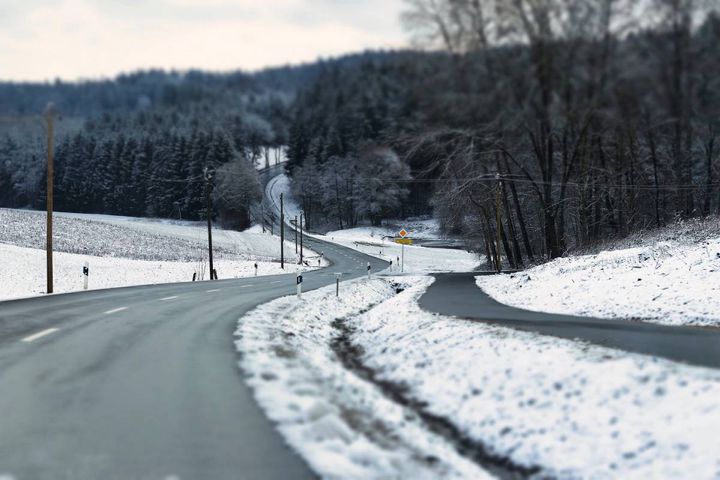Photo via pixabay.com/Thilo Becker
70% of U.S. roads are in snowy areas, increasing the threat of an accident significantly.
Federal data shows that over 150,000 automotive crashes occur annually due to icy roads, and over 1,800 people die per year in vehicle crashes due to driving in snowy and icy conditions.
Winter is around the corner and now is the time for fleet operators to remind drivers of some scary statistics so they keep safety top of mind during the most frigid months.
Approximately 70% of the population in the United States lives in places that have snowy and icy conditions during the winter. What’s more, depending on your locale, “winter weather” may already be just around the bend.
Here are some hard, cold facts your drivers should know: Driving on snowy roads can take your car 10 times longer to stop completely, according to AAA. Moreover, The Weather Channel notes that slushy or snowy pavement causes a 30% to 40% speed reduction on major roads.
Of particular note, about 17% of vehicle crashes occur in snowy conditions, according to the National Highway Traffic Safety Association. What’s more, 70% of roads in the United States are in snowy areas, which increases the threat of an accident significantly.
As the days grow shorter and the weather turns cooler, here are seven tips offered by Zutobi, a driver education company, about how to stay safe when behind the wheel in the winter months.
Prepare your vehicle. Before the winter weather hits, be sure you get your vehicle serviced and have your tires checked. A safe level of tread is critical for winter weather driving. Make sure your fluids are topped off. It’s safer to have at least half a tank of fuel, and be sure your windshield fluid is always full. Road salt tends to increase your need during the winter for cleaning your windshield.
Remember the driving basics. Don’t forget to buckle up and ensure that you are in a physical and mental state that’s safe for driving. Being fatigued or distracted will put you in a dangerous condition for the roadway and getting your job done.
Watch your speed and increase following distance. Slowing down is critical in winter driving conditions. Be cautious to avoid hitting other cars or stationery items by reducing your speed. Another way to be safer is to increase the distance between you and the vehicle in front of you. Instead of the usual 3-second following distance, consider 5 seconds in winter driving conditions. This will allow you more time to stop should something unforeseen happen. For example, in icy conditions, the stopping distance can be up to 10 times longer compared to when driving on a dry road, so you need that extra safety margin to stay safe. We might also consider reducing your speed by half if driving on packed snow.
Keep your low beam headlights on. Using your headlights isn’t only about allowing you to see better, but it will help you be seen by others. Especially during the winter, any extra visibility can be a safety precaution. However, remember that high beam headlights aren’t necessarily better than low beams. In bad weather conditions, high beams can actually make you see less instead of more.
Clear all windows. Be sure to leave enough time to clear all your windows of snow and ice as well as defrost them before you get on the road. It can be tempting to just chip away enough so you can barely see and hope that the warmth of the car will take care of the rest during the trip. However, clear visibility is really important to stay safe in winter weather. Snow can also fly off your vehicle and create a road hazard for drivers behind you.
Don’t slam your brakes. If you happen to lose control of your vehicle on an icy road, it can be hard to know what to do quickly enough. The most important thing is to take your foot off the gas pedal so your vehicle reduces speed. It can be difficult to regain control because you often instinctively want to do the wrong things like slam on your brakes and counter-steer. If your vehicle has anti-lock brakes, that can help you from skidding. Regular brakes may need to be pumped to keep them from locking.
Be extra cautious around curves and shaded areas. Curves and shaded areas are known to hide spots of ice, making them very dangerous during winter, especially on wet and cold days. These areas tend to freeze first, hide spots of ice, and remain frozen the longest.
Source: https://www.automotive-fleet.com




